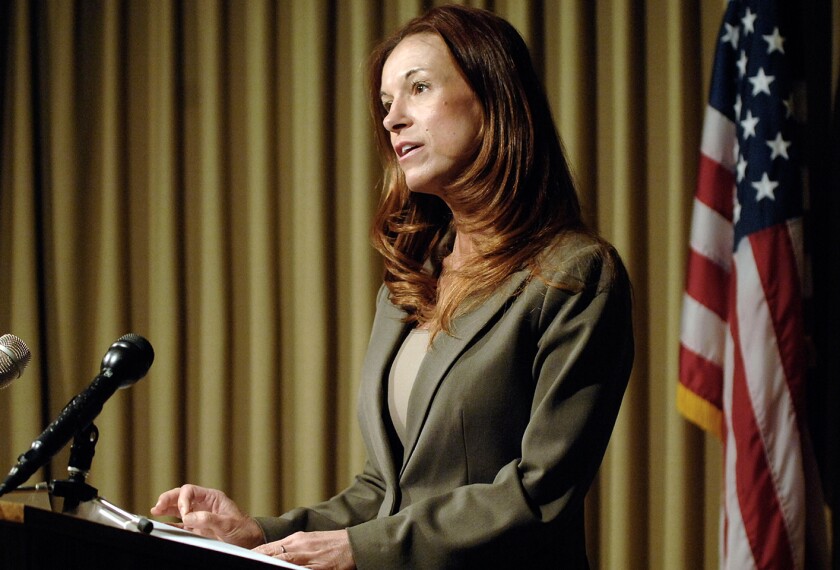The U.S. Congress missed a chance last week to avert the automatic federal spending cuts known as sequestration when it passed legislation extending funding for all programs—including education—at current levels, minus a 5 percent across-the-board reduction.
Lawmakers’ decision means that the squeeze is likely to stay in place for the 2013-14 school year, for which districts are already preparing. President Barack Obama expressed dismay that Congress did not act to ward off the cuts when it finalized its spending bill fiscal 2013, which was approved on March 21. But he indicated he would sign the spending legislation, in order to prevent a government shutdown.
Meanwhile, dueling budget measures put forth by House Republicans and Senate Democrats for fiscal 2014, which starts on Oct. 1, make it clear that the long-term agreement on taxes, spending, and entitlement programs—that’s viewed as necessary to stop the cuts—is likely to remain elusive.
Sequestration, which affects both military programs and a range of domestic programs, was put in place as part of a deal to raise the debt ceiling, back in summer 2011. The prospect of the cuts was supposed to prod lawmakers from both sides of the aisle and the Obama administration to come up with a bipartisan accord on the nation’s fiscal future. The cuts are set to stay in place for another decade, unless lawmakers can figure out a way to stop them. They will have another chance to avoid the cuts when Congress must raise the debt ceiling, likely this summer.
Sharp Contrasts
Meanwhile, Democrats in the Senate and Republicans in the House released budget blueprints that contrast sharply when it comes to the future of the sequestration cuts–and education spending in general.
“The problem is that the roads are radically forking in different directions,” said Joel Packer, the executive director of the Committee for Education Funding, a lobbying coalition in Washington, which prefers the Senate Democrats’ plan.
The House GOP budget plan, written by U.S. Rep. Paul Ryan of Wisconsin, the chairman of the House Budget Committee, would seek to avert many of the cuts for military programs by shifting a greater share of the reductions to domestic spending programs, the category that includes education.
Mr. Ryan’s budget, which was approved by the House on March 21 on a largely party-line vote of 221 to 207 isn’t specific about what would happen to individual education programs, such as Title I grants, which target schools with disadvantaged students, and state grants for special education. But the plan does call on lawmakers to eliminate what it terms “duplicative” K-12 programs, particularly in the area of teacher quality.
“The current structure for K–12 programs at the [U.S.] Department of Education is fragmented and ineffective,” the Ryan budget states. “Moreover, many programs are duplicative and poorly targeted to students with the greatest needs.”
The Ryan budget also would have some major implications for federal student-lending programs. For instance, it would allow a planned hike in student-loan interest rates to go through, doubling the interest on federal student loans from 3.4 percent to 6.8 percent, according to an analysis by the CEF. That increase was slated to go into effect last summer, until both President Obama and Gov. Mitt Romney, then the presumptive GOP presidential nominee, called for halting the increase.
Congress was able to then pass a one-year extension of lending rates at the 3.4 percent level. However, it’s unclear whether the politics will be similar this time around: Mr. Ryan’s budget indicates that Republicans are likely to allow the increase to go through to avoid adding to the deficit.
Mr. Ryan’s budget also seeks to put the Pell Grant program, which helps low-income students cover the cost of college, on firmer fiscal footing, in part by eliminating the grants for students who attend postsecondary education less than half time, the CEF analysis found.
Senate’s Ideas
On the other hand, a plan authored by Sen. Patty Murray, D-Wash., the chairwoman of the Senate Budget Committee, would seek to put an end to the sequestration cuts through tax increases and reductions that would affect both military and domestic spending at roughly the same levels. Under Ms. Murray’s plan, domestic spending would steadily increase over time.
The Senate budget also calls for investments in key formula programs, such as Title I grants to districts and special education, as well as career and technical education programs, literacy, and mathematics and science education. It also calls for unspecified new investment in early-learning programs—which Mr. Obama emphasized in his State of the Union Address earlier this year.
On higher education, Ms. Murray’s budget would keep in place the current interest rate on federal student loans of 3.4 percent. And it doesn’t call for the same changes in the Pell Grant program spelled out in Mr. Ryan’s budget.
“Our budget also makes sure we aren’t reducing our fiscal deficit while increasing our deficits in education, skills, infrastructure, and innovation,” Ms. Murray said.
The Senate was expected to continue consideration of the Murray plan last week. However, it appears unlikely that the two plans will be merged into a single document to help guide congressional tax and spending decisions over the next year—leaving unresolved the question of how lawmakers will cope with continued spending cuts.





